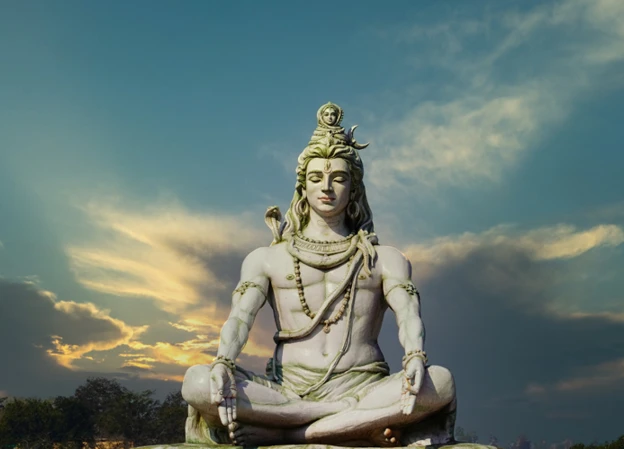Shiva, the enigmatic deity of Hindu mythology, captivates the imagination with his multifaceted persona and compelling legends. From his mesmerizing cosmic dance that symbolizes creation and destruction to his divine love story with Parvati, the goddess of beauty and power, Shiva’s tales are both awe-inspiring and mysterious. Known as the destroyer among the Hindu trinity, Shiva wields immense power and often takes on avatars to maintain cosmic order. As the embodiment of contradictions, he is both fierce and compassionate, fearsome and benevolent. Through his symbolism and sacred objects like the trident and sacred drum, Shiva’s presence is felt in every aspect of life. Join us as we delve into the fascinating legends of Shiva in Hindu mythology, and uncover the depths of this extraordinary deity.
Contents
- The Birth of Shiva
- Shiva and Parvati
- Shiva as the Destroyer
- Shiva’s Avatars
- Shiva’s Symbolism and Sacred Objects
- Shiva in Popular Tales and Folklore
- Conclusion
-
Frequently Asked Questions
- 1. What does the cosmic dance of Shiva symbolize?
- 2. How did Shiva and Parvati meet?
- 3. What is the significance of the Ardhanarishvara form of Shiva?
- 4. How does Shiva embody both creation and destruction?
- 5. Who is Virabhadra, and why is he associated with Shiva?
- 6. What does the blue throat of Shiva symbolize?
- 7. What is the significance of Shiva’s trident, known as the Trishula?
- 8. Why is Shiva often depicted holding a sacred drum called the Damru?
- 9. What is the legend of Shiva and Ravana?
- 10. What is the story of Shiva and Ganga?
- References
-
Frequently Asked Questions
- FAQs about Shiva in Hindu Mythology
- 1. Who is Shiva in Hindu mythology?
- 2. What are some of the symbols associated with Shiva?
- 3. What is the significance of Shiva’s cosmic dance?
- 4. How is Shiva’s marriage with Parvati portrayed in Hindu mythology?
- 5. What is the story behind Shiva’s blue throat?
- 6. Who are the avatars of Shiva?
- 7. What does the trishula symbolize in Shiva’s mythology?
- 8. How is Shiva represented as the Lord of Destruction?
- 9. What is the legend of Shiva and Ravana?
- 10. How is Shiva depicted in popular tales and folklore?
- References
- Read More
The Birth of Shiva
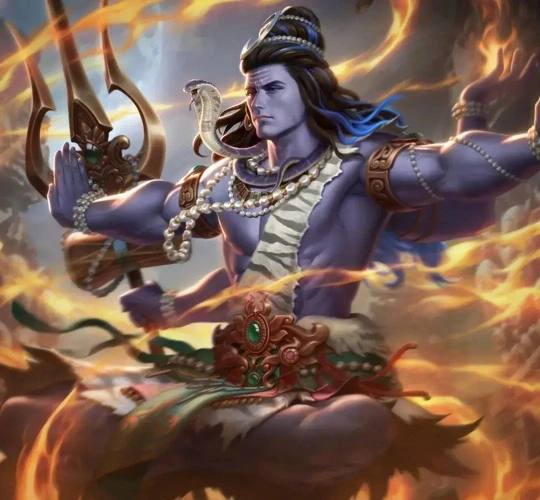
The Birth of Shiva in Hindu mythology is a tale shrouded in mystery and wonder. According to ancient legends, Shiva emerged from the cosmic void, the formless and infinite expanse of existence. He is said to have manifested himself as an eternal flame of light, untouched by the bounds of time and space. This divine birth is often symbolized by the cosmic dance of Shiva, known as the Tandava. In this celestial dance, Shiva gracefully moves through various vibrant poses, representing creation, preservation, and destruction. The Tandava also signifies the eternal cycle of life, death, and rebirth. As the cosmic dancer, Shiva’s dance is said to bring balance and harmony to the universe. The Birth of Shiva encompasses the enigma of his origin, his divine nature, and his significant role in shaping the cosmos. To explore more ancient stories and the cosmic wonders they hold, check out our article on uncovering ancient stories through zodiac constellations.
1.1 The Cosmic Dance of Shiva
The cosmic dance of Shiva, known as the Tandava, is a mesmerizing spectacle that embodies the essence of creation and destruction. In Hindu mythology, this celestial dance is believed to be the source of the universe’s continuous cycle of birth, death, and rebirth. Shiva’s dance is portrayed as a powerful and vigorous display, filled with intricate movements that represent the rhythmic flow of all life forms. The Tandava is often depicted in sculptures and paintings with Shiva surrounded by a circle of flames, symbolizing his transcendence of worldly desires. The dance is said to be performed in two contrasting ways – the Ananda Tandava, which evokes feelings of joy, and the Rudra Tandava, which represents the fierce and destructive aspects of Shiva. Through his cosmic dance, Shiva brings harmony and balance to the universe, reminding us of the impermanence of all things. To explore more about astrological compatibility, you can read our article on Leo and Aquarius zodiac compatibility, to dive deeper into the unique characteristics of the lesser-known Ophiuchus, check out our article on the unique characteristics of Ophiuchus.
Shiva and Parvati
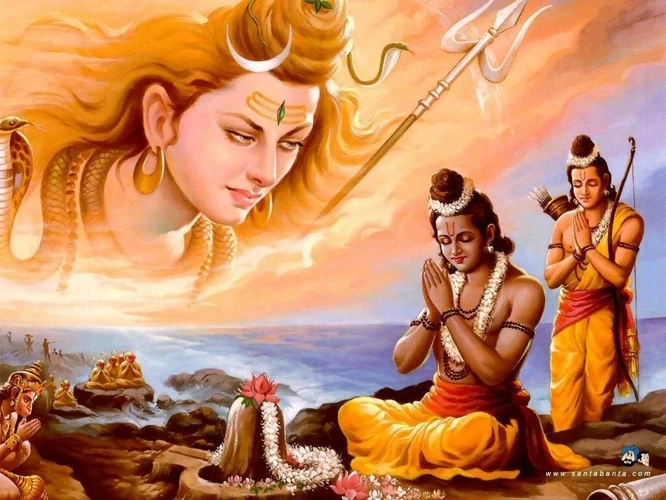
Shiva and Parvati form one of the most beloved divine couples in Hindu mythology, representing the eternal bond of love, harmony, and balance. The story of their union begins with Parvati, the daughter of the mountain king Himavat. Parvati was deeply devoted to Shiva and embarked on intense penance to win his affection. Moved by her devotion, Shiva agreed to marry her. Their celestial wedding was a grand affair, witnessed by gods, goddesses, and celestial beings. One of the most iconic depictions of Shiva and Parvati is the Ardhanarishvara, representing the fusion of masculine and feminine energies. The Ardhanarishvara is a powerful symbol of the inseparable union of Shiva and Parvati, illustrating the essential balance between male and female principles in the universe. Their divine love story teaches us about the importance of harmony and synergy in relationships. Shiva and Parvati’s union exemplifies the essence of loyalty, devotion, and eternal love.
2.1 The Marriage of Shiva and Parvati
The Marriage of Shiva and Parvati is a captivating tale in Hindu mythology that symbolizes the union of divine masculine and feminine energies. According to the legends, Parvati, the daughter of the Himalayas, was deeply in love with Shiva and desired to marry him. However, Shiva, being a renunciant and immersed in his ascetic practices, was initially disinterested in worldly attachments.
Undeterred by Shiva’s aloofness, Parvati embarked on a rigorous series of penances and sought to win his heart through her devotion and determination. She renounced her luxurious lifestyle and wandered into the wilderness, practicing austerities and meditating with unwavering devotion. Parvati’s unwavering dedication moved Shiva, and he recognized her as his consort.
The divine wedding of Shiva and Parvati is believed to have taken place in the presence of gods, goddesses, sages, and celestial beings. It was a grand celebration, marked by music, dance, and celestial blessings. The marriage of Shiva and Parvati represents the harmonious integration of masculine and feminine energies, creating balance and completeness in the universe.
This divine union gave birth to their son Kartikeya, also known as Murugan, who became the commander-in-chief of the gods’ armies. Their love and companionship are an inspiration to devotees, emphasizing the importance of a divine partnership in earthly relationships.
The marriage of Shiva and Parvati signifies the divine union of opposites and serves as a reminder that unity in diversity is the foundation of a harmonious existence. It teaches us that love, devotion, and unwavering commitment can bridge the gap between seemingly different beings and bring forth boundless bliss.
2.2 The Ardhanarishvara: The Fusion of Male and Female Energies
The Ardhanarishvara is a unique representation of Lord Shiva, encapsulating the fusion of male and female energies. In this form, Shiva is depicted as half-man and half-woman, symbolizing the inseparable union of the divine masculine and feminine forces. The right half of the deity represents Shiva, adorned with matted hair, a crescent moon, and a third eye, signifying his transcendent power. The left half embodies Parvati, the gentle and nurturing goddess, with flowing locks of hair and delicate features. Together, they form a harmonious whole, representing the cosmic balance between creation and destruction, gentleness and fierceness, and stability and change. The Ardhanarishvara is a profound embodiment of the belief that the ultimate reality transcends gender binaries and encompasses the unity of all existence. This divine form of Shiva serves as a powerful reminder of the interdependent and interconnected nature of the universe. It emphasizes the importance of embracing both feminine and masculine energies within ourselves to attain wholeness and spiritual enlightenment. The Ardhanarishvara’s symbolism is awe-inspiring and invites us to explore the depths of gender dynamics and spiritual harmony.
Shiva as the Destroyer
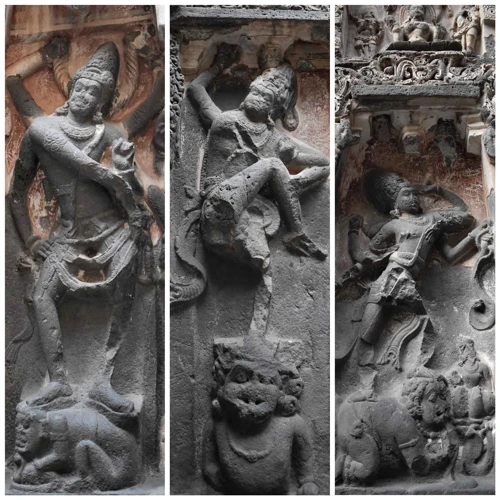
Shiva, revered as the destroyer among the Hindu trinity, assumes the role of a fierce and formidable deity in Hindu mythology. Tales of Shiva’s destructive power are both captivating and awe-inspiring, showcasing his immense strength and determination. One such legend recounts the story of Shiva taking on the fiery demon, Andhaka. Andhaka’s relentless pursuit of power led him to challenge the gods themselves. In a fierce battle, Shiva unleashed his wrath, ultimately defeating Andhaka and restoring balance in the universe. Another tale speaks of Shiva’s anger, which materialized as the fearsome form of Virabhadra. Created to avenge the death of Shiva’s beloved wife, Sati, Virabhadra unleashed his fury upon the universe. With a monstrous appearance, he caused destruction on a grand scale, leaving chaos in his wake. Despite his destructive nature, Shiva’s purpose as the destroyer is not malevolent but rather serves to rid the world of imbalance and turmoil. This aspect of Shiva is further exemplified in the form of Nataraja, the cosmic dancer. As Nataraja, Shiva dances the Tandava, a symbol of destruction and rebirth, signifying the eternal cycle of creation and dissolution. Through his role as the destroyer, Shiva showcases the inevitability of change and the necessary destruction that paves the way for new beginnings.
3.1 Lord of Destruction: Tales of Shiva’s Fury
Lord of Destruction: Tales of Shiva’s Fury showcase the immense power and wrath associated with the deity. Shiva, known as the destroyer among the Hindu pantheon, is depicted as an unstoppable force when provoked. One such tale is the story of Shiva and Daksha, the father of Shiva’s consort, Sati. Daksha held a grand yajna, or sacrificial ceremony, to which he invited all the deities except Shiva. Deeply hurt and enraged by this exclusion, Sati attended the ceremony against Shiva’s wishes. Unable to bear the disrespectful treatment towards her husband, Sati self-immolated in the sacrificial fire. This tragic event ignited Shiva’s fury, and he unleashed his destructive power in the form of Veerabhadra, a fierce warrior created from his matted locks. Veerabhadra manifested with multiple arms wielding weapons that wreaked havoc at the yajna, causing chaos and destruction. The tale of Shiva’s fury emphasizes his role as the cosmic balance, where destruction is necessary for creation and renewal. It also reveals his unwavering love and loyalty to his consort, Sati. The Lord of Destruction’s tales not only evoke a sense of fear but also demonstrate the significance of destruction as a transformative and necessary force in the cosmic order.
3.2 Shiva as Nataraja: The Cosmic Dancer
Shiva as Nataraja, the Cosmic Dancer, is one of the most iconic representations of this deity in Hindu mythology. In this form, Shiva is depicted as a dancer encircled by a ring of fire, symbolizing the eternal cycle of creation, preservation, and destruction. The Nataraja image showcases Shiva’s cosmic power as he gracefully performs the Tandava dance. Each aspect of this depiction carries deep symbolism and meaning. The fire surrounding Nataraja represents the transformative energy of creation and destruction. It signifies the destruction of ignorance and the birth of knowledge. Shiva’s lifted foot represents liberation from earthly attachments, while his lower foot firmly presses down on the demon of ignorance, symbolizing triumph over darkness and evil. Shiva’s multiple arms represent his ability to simultaneously engage in various cosmic activities. In one hand, he holds a drum, representing the rhythmic sound that permeates the universe and sets the pace of creation. In another hand, he holds a flame, symbolizing the destructive aspect of fire, which clears the path for new beginnings. The Nataraja form of Shiva encapsulates the divine balance of opposites and the cosmic dance that sustains the world. It is a profound reminder of the ever-changing nature of existence and the eternal rhythm of life.
Shiva’s Avatars
![]()
Shiva, the powerful deity of Hindu mythology, is known for his various avatars or incarnations. Each avatar represents a different aspect of Shiva’s divine nature and plays a unique role in the cosmic order. One of the most well-known avatars of Shiva is Virabhadra. Born out of Shiva’s rage and sorrow, Virabhadra is a fierce warrior who was created to avenge the death of Shiva’s beloved wife, Sati. With his multiple arms and weapons, Virabhadra epitomizes Shiva’s wrath and determination. Another prominent avatar is Neelkanth, who is characterized by his blue throat. Legend has it that during the churning of the cosmic ocean, poisonous fumes threatened to engulf the world. To protect humanity, Shiva swallowed the venom, which turned his throat blue. Neelkanth symbolizes Shiva’s selflessness and his willingness to bear the burdens of the world. Through his avatars, Shiva showcases his diverse qualities and serves as a source of inspiration and protection.
4.1 The Fierce Warrior: Shiva as Virabhadra
In Hindu mythology, Shiva takes on the form of Virabhadra, the fierce warrior, to restore cosmic order and protect the gods. The legend of Virabhadra begins with the tragic tale of Sati, the first wife of Shiva. When Sati’s father insulted Shiva and excluded him from a grand ritual, she was overcome with grief and immolated herself in the sacred fire. Consumed by anger and sorrow, Shiva unleashed his fury, tearing a lock of his hair and throwing it to the ground. From this fiery act emerged Virabhadra, a warrior with a thousand arms, matted hair, and eyes filled with rage. Accompanied by a ferocious army of divine beings, Virabhadra marched to the site of the ritual, wreaking havoc and avenging Sati’s death. He destroyed everything in his path, leaving chaos in his wake. The tale of Virabhadra symbolizes the immense power and destructive force of Shiva when provoked or when justice needs to be served. It also serves as a reminder of the consequences of disrespecting divine forces. The story of Shiva as Virabhadra is just one example of the countless intriguing legends that surround this enigmatic deity.
4.2 The One with the Blue Throat: Shiva as Neelkanth
Shiva, in his manifestation as Neelkanth, is often referred to as “The One with the Blue Throat.” This intriguing epithet is derived from a prominent Hindu mythological tale. According to the legend, during the churning of the cosmic ocean, known as the Samudra Manthan, a potent poison called Halahala emerged from the depths. This poison had the potential to destroy the entire universe. In order to save existence, Shiva selflessly drank the poison, holding it in his throat. The poison turned his throat blue, giving rise to his iconic epithet, Neelkanth. This act of sacrifice and compassion highlights Shiva’s role as the protector and savior of the world. The story of Neelkanth teaches us about the power of selflessness and the willingness to bear immense suffering for the greater good. Shiva’s blue throat symbolizes his ability to transmute the destructive force into a source of divine power and wisdom. It serves as a reminder of the importance of inner strength and resilience, even in the face of immense challenges. The myth of Shiva as Neelkanth is a testament to his unwavering commitment to preserving the balance and harmony of the cosmos.
Shiva’s Symbolism and Sacred Objects
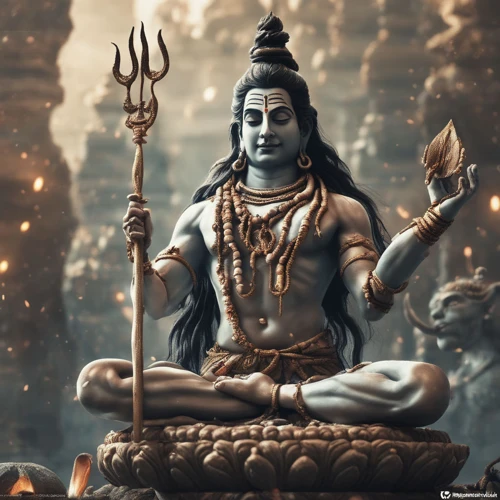
Shiva, the powerful deity of Hindu mythology, is rich in symbolism and associated with sacred objects that hold deep significance. One of the most iconic symbols of Shiva is the Trishula, or the trident. This three-pronged weapon represents the three aspects of existence – creation, preservation, and destruction. It signifies the power to transform and maintain cosmic order. Another sacred object linked to Shiva is the Damru, a small drum held in one of his hands. The rhythmic sound produced by the Damru is believed to create the cosmic vibrations that resonate throughout the universe. It symbolizes the primal sound of creation known as the “Om.” The Damru’s rhythmic beat is thought to dissolve distractions and bring clarity to the mind. Shiva’s symbolism and sacred objects serve as reminders of the eternal truths and the interplay of forces that shape the universe. Through these symbols, devotees connect with the divine energy of Lord Shiva and seek transformation and enlightenment.
5.1 Trishula: Shiva’s Trident
The Trishula, a powerful symbol associated with Shiva, is a three-pronged trident that holds great significance in Hindu mythology. Representing the three fundamental aspects of existence – creation, preservation, and destruction – the Trishula embodies Shiva’s role as the destroyer among the Hindu trinity. Each prong of the trident symbolizes a different aspect. The first prong signifies the destruction of ego and the removal of negative energies. The second prong represents the cosmic illusion known as Maya, reminding us that all material existence is temporary. The third prong represents liberation and spiritual awakening, leading beings towards enlightenment. The Trishula is also believed to have the power to transform and transmute energy. It is said that when Shiva strikes the ground with his trident, earthquakes occur, and mountains crumble. The Trishula is often depicted in various artistic representations and is worshipped by devotees seeking protection and spiritual growth. This sacred symbol of Shiva’s power serves as a reminder of the transient nature of life and the importance of seeking spiritual truth.
5.2 Damru: Shiva’s Sacred Drum
The Damru, a small hourglass-shaped drum, holds immense significance in Shiva’s iconography and symbolism. This sacred instrument is said to represent the primal sound of creation, known as the “Om” or “Aum” sound. The distinct sound produced by the Damru is believed to resonate throughout the cosmos, symbolizing the rhythmic cycle of life and death. The two sides of the drum represent the duality of existence – the male and female energies, the yin and yang, and the balance between opposing forces. It is said that when Shiva plays the Damru, it sets the universe in motion. The beats of the Damru create the cosmic dance of creation and destruction, maintaining the equilibrium of the cosmos. In many depictions, the Damru is shown hanging from Shiva’s trident, emphasizing its importance in his divine persona. The sound of the Damru is also associated with spiritual awakening and enlightenment. It is believed that by listening to the resonating sound of the Damru, one can attain a higher state of consciousness and connect with the divine. The Damru’s significance in Shiva’s mythology highlights the profound interplay between sound, rhythm, and cosmic harmony.
Shiva in Popular Tales and Folklore
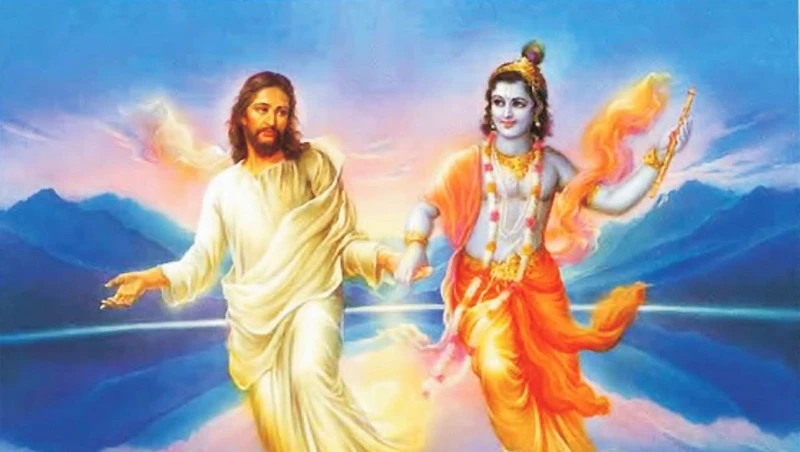
Shiva’s presence in popular tales and folklore is widespread, showcasing his influence and reverence among devotees. One such captivating legend is the story of Shiva and Ravana. According to Hindu mythology, Ravana, the demon king, was an ardent devotee of Shiva. In order to gain invincibility, Ravana went to great lengths to please Shiva. He performed intense penance and even offered his ten heads as sacrifice. Eventually, Shiva was pleased with Ravana’s devotion and granted him immense power, making him nearly invincible in battle. However, Ravana’s arrogance and misuse of his newfound strength led to his downfall. Another fascinating tale is the story of Shiva and Ganga, the sacred river. It is believed that Ganga descended from heaven to earth to purify the sins of humanity. However, the force of her descent was so immense that it threatened to flood the earth. To prevent this catastrophe, Shiva captured Ganga in his matted locks, allowing her to flow gently and peacefully onto the earth. These popular tales and folklore reflect the multifaceted nature of Shiva and his interactions with various characters, highlighting his role as a guide, protector, and source of wisdom.
6.1 The Legend of Shiva and Ravana
The Legend of Shiva and Ravana is a captivating tale that showcases Shiva’s immense power and the triumph of good over evil. According to Hindu mythology, Ravana, the ten-headed demon king, was an ardent devotee of Shiva. Once, to demonstrate his devotion, Ravana attempted to uproot and carry Mount Kailash, Shiva’s abode, on his shoulders. In response, Shiva pressed his toe down on the mountain, causing Ravana to wriggle in excruciating pain. To teach him a lesson, Shiva placed a divine lingam, a symbolic representation of his energy, on the ground and instructed Ravana not to put it down until he reached Lanka, his kingdom. Ravana, filled with pride, accepted the challenge and began his journey. As the days passed, the weight of the lingam became unbearable. In search of relief, Ravana came across a young cowherd boy who asked him to hold the lingam while he relieved himself. The boy, in reality, was Lord Ganesha, the son of Shiva. As Ravana held the lingam, Ganesha put it down, creating the sacred site of Gokarna. When Ravana returned, he found the lingam on the ground and realized his mistake. This incident is believed to be the origin of the renowned Gokarna Mahabaleshwar Temple, a place of immense worship dedicated to Lord Shiva. The Legend of Shiva and Ravana epitomizes Shiva’s divine intervention and the consequences of arrogance. It serves as a reminder of the triumph of righteousness and the ultimate power of the divine.
6.2 Shiva and Ganga: The Descent of the Sacred River
In Hindu mythology, the story of Shiva and Ganga’s connection is a captivating tale known as “The Descent of the Sacred River.” According to ancient texts, once the mighty Ganga was locked away in the heavens, and her descent to Earth was necessary for the salvation of humankind. Seeking a savior, the celestial beings approached Lord Shiva and implored him to allow Ganga’s descent. Understanding the significance of the task at hand, Shiva agreed, but he knew that Ganga’s forceful arrival could potentially wash away the Earth. To mitigate this, Shiva cleverly caught Ganga in his matted locks, and as she flowed through his hair, he gently released her in a controlled stream. This act symbolizes the delicate balance between power and restraint that Shiva embodies. As Ganga eventually meandered her way onto Earth, her purifying waters brought abundant blessings and spiritual renewal. The Descent of the Sacred River showcases the harmonious bond between Shiva and Ganga and their everlasting connection to the well-being of humanity.
Conclusion
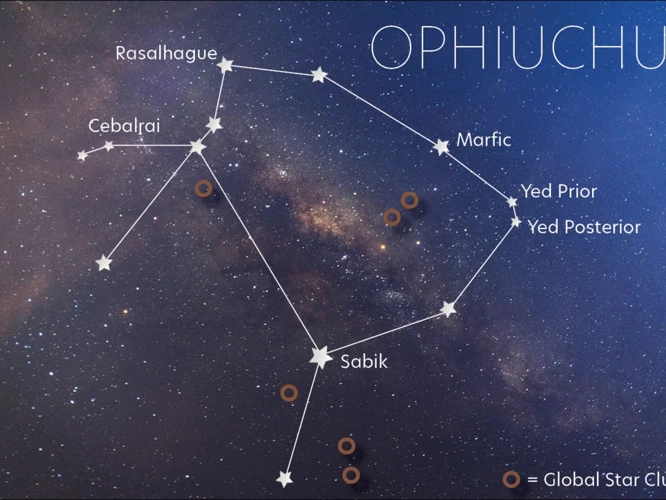
In conclusion, the legends of Shiva in Hindu mythology are a captivating tapestry of divine power, love, and cosmic balance. From his birth from the cosmic void to his profound connection with Parvati, Shiva’s myths showcase his multifaceted nature and his role as the destroyer, dancer, and protector of the universe. The symbolism and sacred objects associated with Shiva emphasize his significance in Hindu culture, from the trident that represents his power to the sacred drum that resonates with his cosmic rhythms. Shiva’s tales not only entertain and inspire, but also offer deep philosophical insights into the cyclical nature of existence and the interplay between creation and destruction. As one of the most revered deities in Hindu mythology, Shiva continues to ignite the imaginations of millions and serves as a powerful symbol of transcendence and transformation. The fascinating legends of Shiva invite us to explore the realms of mythology, spirituality, and the eternal mysteries of the cosmos.
Frequently Asked Questions

1. What does the cosmic dance of Shiva symbolize?
The cosmic dance of Shiva, known as the Tandava, symbolizes the continuous cycle of creation, preservation, and destruction. It represents the eternal rhythm of the universe and the interplay of cosmic forces.
2. How did Shiva and Parvati meet?
According to Hindu mythology, Shiva and Parvati met during a grand cosmic gathering. Parvati was instantly drawn to Shiva’s aura and divine presence, and she resolved to win his affection through her devotion and penance.
3. What is the significance of the Ardhanarishvara form of Shiva?
The Ardhanarishvara form of Shiva represents the fusion of male and female energies. It symbolizes the harmonious union of divine masculine and feminine principles, highlighting the inseparable nature of the universe’s dualities.
4. How does Shiva embody both creation and destruction?
Shiva embodies both creation and destruction as he is responsible for the cyclical nature of existence. His role as the destroyer allows for the renewal and transformation necessary for new beginnings and growth.
5. Who is Virabhadra, and why is he associated with Shiva?
Virabhadra is an incarnation of Shiva who was created to avenge the death of Shiva’s beloved wife, Sati. He is depicted as a fierce warrior and represents the unruly and wrathful aspects of Shiva’s divine nature.
6. What does the blue throat of Shiva symbolize?
The blue throat of Shiva, known as Neelkanth, symbolizes his immense power and capacity to consume poison. It represents his ability to transform negativity into positivity, turning poison into nectar.
7. What is the significance of Shiva’s trident, known as the Trishula?
The Trishula represents the three fundamental aspects of existence: creation, preservation, and destruction. It symbolizes the balance and harmony required in the cosmic order and is often associated with Shiva’s power to overcome evil forces.
8. Why is Shiva often depicted holding a sacred drum called the Damru?
The Damru is believed to represent the primordial sound of creation, known as “Om.” It symbolizes the rhythmic vibrations that give rise to the universe. By playing the Damru, Shiva maintains the cosmic rhythm necessary for existence.
9. What is the legend of Shiva and Ravana?
In the legend of Shiva and Ravana, Ravana, the demon king, attempted to uproot Mount Kailash, Shiva’s abode. In response, Shiva merely placed his foot on the mountain, crushing Ravana’s pride and reminding him of his insignificance in the face of divine power.
10. What is the story of Shiva and Ganga?
The story of Shiva and Ganga tells of how Ganga, the sacred river, descended from the heavens to Earth. Shiva gracefully caught the mighty river in his locks, preventing its overwhelming force from causing chaos and ensuring its gentle flow on Earth.
References
- Popular Stories of Lord Shiva, the Hindu God
- What are some fascinating stories about Lord Shiva?
- 9 Fascinating Stories About The Legend Of Shiva You …
Frequently Asked Questions

FAQs about Shiva in Hindu Mythology
Here are some frequently asked questions about Shiva in Hindu mythology:
1. Who is Shiva in Hindu mythology?
Shiva is one of the most significant deities in Hindu mythology. He is known as the destroyer and is part of the Hindu trinity, along with Brahma, the creator, and Vishnu, the preserver.
2. What are some of the symbols associated with Shiva?
Shiva is often depicted with various symbols, including the trishula (trident), damru (sacred drum), and snake around his neck. These symbols hold deep spiritual and mythological significance.
3. What is the significance of Shiva’s cosmic dance?
Shiva’s cosmic dance, known as the Tandava, represents the eternal rhythm of life and creation. It symbolizes the cyclical nature of the universe, with Shiva as the ultimate source of energy and movement.
4. How is Shiva’s marriage with Parvati portrayed in Hindu mythology?
The marriage of Shiva and Parvati is considered a divine union and is celebrated throughout Hindu culture. Their union represents the harmonious balance of masculine and feminine energies in the universe.
5. What is the story behind Shiva’s blue throat?
According to legend, during the churning of the cosmic ocean, a poison emerged that threatened to destroy the universe. To save the world, Shiva consumed the poison, which turned his throat blue. This earned him the name “Neelkanth,” meaning the one with the blue throat.
6. Who are the avatars of Shiva?
Shiva has several avatars, including Virabhadra, a fierce warrior created from his anger, and Neelkanth, the form he took after consuming the poison. These avatars represent different aspects of his power and presence.
7. What does the trishula symbolize in Shiva’s mythology?
The trishula, or trident, is a powerful symbol associated with Shiva. It represents his control over the three aspects of material existence – creation, preservation, and destruction. The trishula also symbolizes the balance of mind, body, and soul.
8. How is Shiva represented as the Lord of Destruction?
Shiva’s role as the destroyer in Hindu mythology is not about causing chaos or annihilation but rather about making way for renewal and transformation. He destroys negative forces and paves the way for new beginnings.
9. What is the legend of Shiva and Ravana?
According to the legend, Ravana, the demon king, sought immortality and performed intense penance to please Lord Shiva. Impressed by his devotion, Shiva granted him a powerful weapon called the Atma Linga. However, Ravana’s pride led to his downfall.
10. How is Shiva depicted in popular tales and folklore?
In popular tales and folklore, Shiva is often portrayed as a compassionate and benevolent deity who grants boons and blessings to his devotees. He is also known for his role in various mythological stories, including the descent of the sacred river Ganga.
References
- Lord Shiva Stories – The Most Popular and Fascinating …
- 9 Fascinating Stories About The Legend Of Shiva You …

